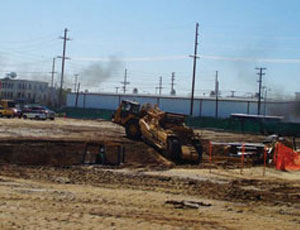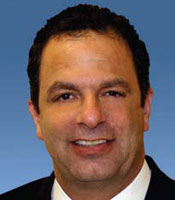If you haven’t taken time to notice, the construction market in California is changing.
After the financial meltdown in the fall, private financing for construction has all but disappeared and that left contractors scrambling for public works projects until the financial markets get right again.


Next year at this time, theCalifornia ConstructionTop Projects list may feature road projects, military work and public office buildings instead of retail centers, hotels and office complexes.
加州承包商说,马克的变化tplace is affecting the types of projects they are building, how they bid and the bids of their competitors.
And one thing is clear: Companies that are prepared to work on public projects, especially with federal stimulus projects rolling in this summer, will be in much better shape than those who have relied on private dollars.

STENMAN
“It’s clear that there will not be the opportunities in the private sector that there will be in the public sector,” says Ron
Public works projects will not be limited to federal stimulus work, though, says John Saliba, vice president with Irvine-based FTR International Inc.
A handful of major public agencies in the Los Angeles area – such as Los Angeles Unified School District, Los Angeles Community College District and Metropolitan Transit Authority – are going to be releasing a great deal of their projects in the next two years, Saliba says.

SALIBA
But until local, state and federal dollars become more readily available, California contractors will have to build large projects – here valued at $40 million or more -- in a competitive bidding environment.
The economy has created some pluses, such as lower construction material costs, but it has created challenges such as lower profit margins on projects.
Some companies also are moving into areas where they have never built before, says Eric Stenman, president of San Diego-based Barnhart Inc., a Heery International Co.

WILDERMUTH
Barnhart has built schools in the San Diego area, but now Stenman says he is finding large national firms seeking to bid on $80-million high schools.
“You didn’t really see them all that much before,” he says.
The economy also is providing opportunity for owners who can take advantage of lower materials cost and increased competition between bidders, Stenman says.
“In talking with owners, they see this as the best time to be building,” he says, but he warns that some contractors don’t bid correctly “because they don’t understand how prevailing wage works.”
Wildermuth agrees that the increased bidding is not limited to just small projects.
“Compared to where it was a few years ago, it is competitive regardless of the value of projects,” he says.
He adds that companies also are building more efficiently than every before, especially with profit margins lower. “You have to pick your projects carefully,” he says.
And with that competition comes some companies that are bidding lower simply to keep work going, Saliba says. But that may not bode well for tomorrow’s building performance, he says.
“There are a lot more bidders out there,” Saliba adds. “The question is: What is the quality going to be?”
